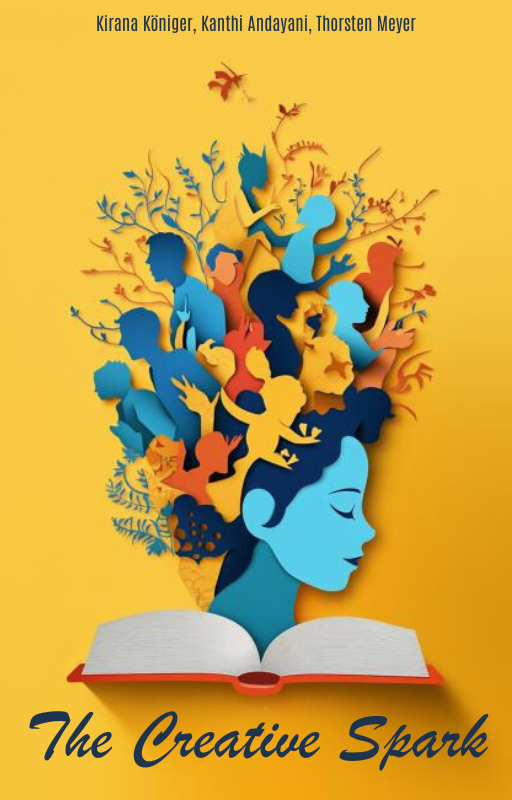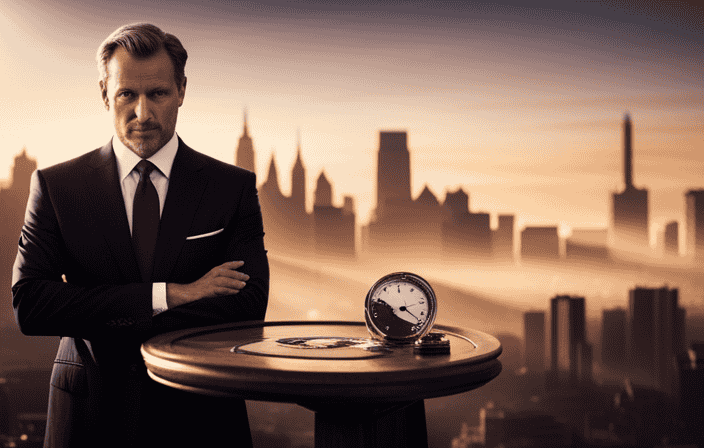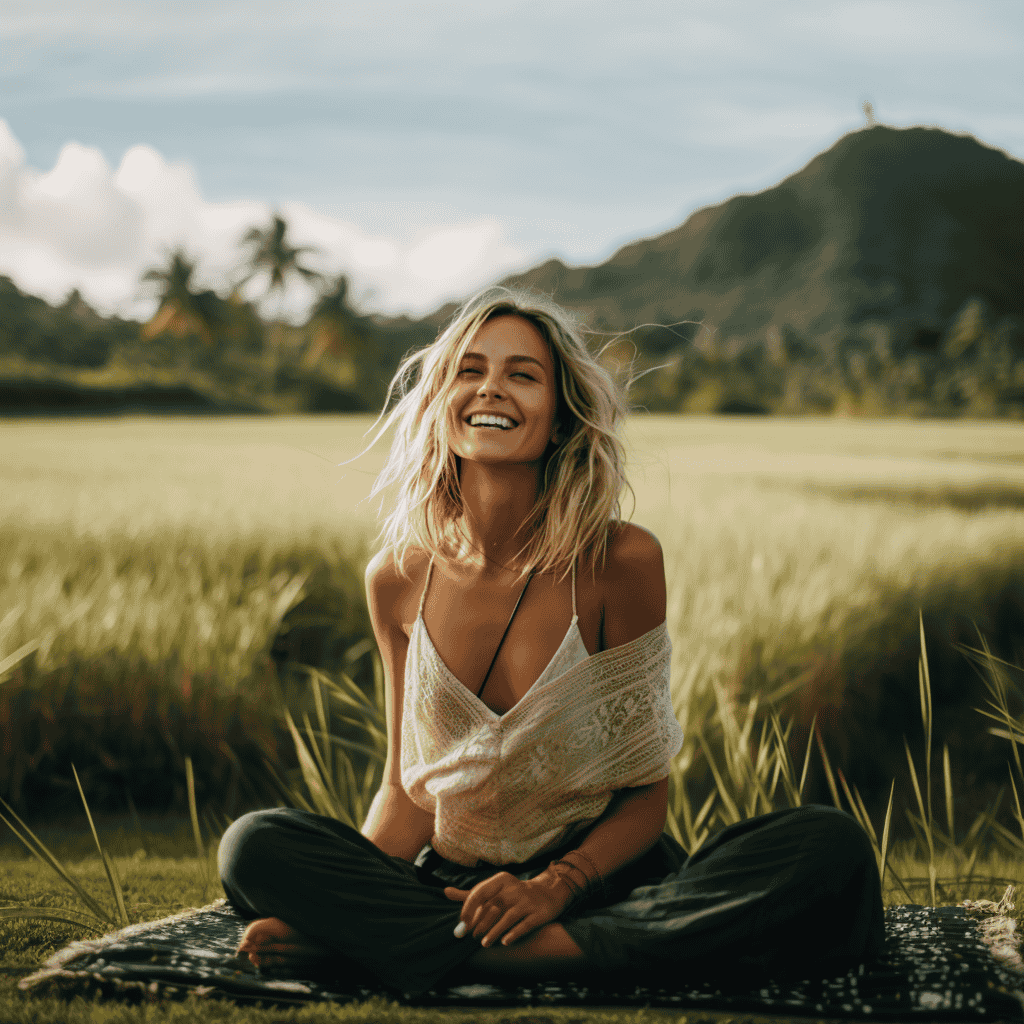Personal Growth
Unplugging for Inner Peace: The Power of Digital Detoxing for Stress Reduction

Life can be challenging, and the pressures of contemporary living frequently impact us. It seems as though we are always caught in an endless race with no endpoint in sight! With technology playing such a prominent role in our lives, it is simple to become overwhelmed and constantly stressed.
That’s why digital detoxing is such an important practice for taking control of your stress levels and finding mental clarity–it allows you to create boundaries with technology and take intentional moments throughout each day to focus on yourself.
It helps put mindfulness practices into action by giving us a chance to slow down, unplug from devices and make space for ourselves; ultimately leading to calmer mindsets and improved well-being. Digital detoxing is the perfect escape valve for reducing stressors in life and creating inner peace.
Reasons For Stress
Stress can be caused by many different factors. Burnout, time management, work overload and mental health are all common sources of stress in our lives. When we experience too much pressure or an overwhelming feeling of responsibility, it is important to take some time for ourselves and try to reduce the amount of stress that we feel. Taking a digital detox throughout each day can provide us with the opportunity to do just that.
In this modern age where technology dominates our daily lives, taking a break from our devices and screens can help us regain control of our lifestyles. Unplugging from smartphones, laptops and tablets gives us the ability to focus on more meaningful activities such as reading, exercise or engaging in hobbies instead of constantly checking emails and scrolling through social media feeds. This allows us to prioritize tasks which will ultimately lead to better organization and improved productivity levels. It also reduces feelings of anxiety due to fewer distractions.
Taking a digital detox throughout each day provides us with invaluable self-care opportunities while helping manage stress levels at the same time. Making small lifestyle changes like this can have lasting positive effects on both physical and mental wellbeing. We owe it to ourselves to make sure that we are properly managing our stress so that we can continue living life optimally without burning out or becoming overwhelmed by every day pressures. With these benefits in mind, let’s now explore further how taking a digital detox helps cope with life’s challenges.
Benefits Of Taking A Digital Detox
Taking a digital detox is an effective way to cope with life’s challenging moments. It provides numerous benefits including stress relief, mental clarity, and focus improvement. Here are four key advantages of taking a digital detox:
- Stress Relief: Taking regular breaks from technology throughout the day can help reduce anxiety levels. This allows us to take a step back and detach ourselves from our screens, giving us time to refocus on other activities that may be more calming and enjoyable.
- Mental Clarity: Technology has been linked to increased cognitive load, making it difficult for people to think clearly or remain productive. A digital detox helps free up bandwidth in our brains so we can get our minds off of what’s stressing us out and onto more positive thoughts and energy.
- Focus Improvement: By setting boundaries around how much technology we use each day, we can improve our ability to concentrate on tasks without worrying about notifications or emails pulling us away from them. Additionally, prioritizing certain types of activities over others helps maintain laser-like focus that leads to greater productivity overall.
- Connection with Nature: Finally, taking a break from technology gives us an opportunity to explore nature which often brings feelings of peace and calmness. Exploring your local parks or hiking trails can offer amazing restorative benefits that far exceed those of staring at a screen all day long!
Without proper management, technology usage can become overwhelming very quickly – leading to heightened levels of stress and decreased performance overall. Setting boundaries for technology usage is essential for optimizing both personal wellbeing as well as professional success.
Setting Boundaries For Technology Usage
Setting boundaries for technology usage is a key part of managing digital addiction. It can be tough to take control over tech distractions, but with some dedication and self-discipline it’s possible to create screen time limits that will help you stay balanced.
You should start by assessing your current technology usage pattern. Write down how much time each day you spend on social media or streaming services like Netflix, along with what type of content you’re consuming. Then brainstorm ways in which the use of those technologies could be reduced or modified so as not to interfere with other activities such as leisure, exercise, sleep, etc. Consider setting alarms or alerts on your phone when it’s time to step away from screens and move onto something else.
When creating tech boundaries make sure they are specific and realistic enough so that they don’t feel overwhelming – this way you’ll also be more likely to stick to them! For example, instead of saying ‘I’m going to stop using my phone after 8pm’, try making an hourly limit such as ‘I’m only allowed one hour of phone use between 6pm and 8pm’. Having these clear limitations can greatly reduce digital distraction and increase productivity throughout the day.
By establishing healthy technology boundaries we can minimize our reliance on digital devices while still finding joy in their use – allowing us to truly experience life without constant interruption from tech distractions.
Strategies To Disconnect From Technology
Are you feeling overwhelmed by technology and the never-ending demands of your devices? We are in an age where it’s difficult to unplug from our phones and laptops. But taking a digital break is essential for both mental and physical health. Fortunately, there are strategies that can help us disconnect from tech and take a much needed phone-free break.
One way to cut back on screen time is to create designated no-tech zones or times throughout each day. This could be as simple as leaving your phone at home while out running errands or setting specific “phone-free” hours before bedtime. During these periods, try replacing electronic activities with more meaningful ones such as reading books, listening to music, meditating, exercising, or engaging in deep conversations with friends and family.
Finally, find ways to stay motivated when it comes to avoiding the distractions of technology. Make small commitments like opting out of social media notifications or refraining from checking emails outside office hours. Or challenge yourself to go tech-free for one full day every week – use this opportunity to engage in enjoyable activities without relying on screens! By slowly introducing habits that promote digital breaks into our lives, we can start reaping the benefits of a healthier relationship with our gadgets.
Activities To Replace Screen Time
When life’s challenges become overwhelming, it can be helpful to take a digital detox throughout each day. This will instantly reduce stress and help you reconnect with yourself. There are many activities that can replace screen time and promote self-care. Here is an overview of some popular ideas:
| Activity | Description |
|---|---|
| Yoga | A physical practice focusing on poses, breathing techniques, relaxation and meditation |
| Hiking | Taking walks in nature to observe the beauty around you while connecting with your inner peace |
| Cooking/Baking | Preparing meals or treats using fresh ingredients, allowing for creative expression and building skills in the kitchen |
| Journaling/Writing | Setting aside time to write down thoughts, feelings, goals or reflections as a form of therapeutic release |
| Crafting/DIY Projects | Using materials such as fabric, paper, wood or clay to create something new through hands-on projects that spark joy and creativity |
These activities not only provide relief from technology overload but also give us opportunities to cultivate mindfulness practices. Incorporating yoga into our daily routine helps us reset our minds by grounding ourselves in the present moment. Going out for hikes encourages connection with nature which brings about deeper insight into ourselves. Cooking allows us to focus on nourishing both body and soul simultaneously. Writing provides an avenue for emotional catharsis when words just don’t seem enough. Crafting gives us space to express our creativity without worrying about perfectionism. All of these activities aid us in creating balance within challenging times so we may emerge stronger than ever before!
How To Develop Mindfulness Practices
Mindfulness is a powerful tool that can help us cope with life’s challenges. In order to reap the benefits, we must develop mindful habits and cultivate mindfulness within our lives. By creating mindful practices for ourselves, we can learn how to better manage our stress levels and take control of our emotions.
One way to begin developing these practices is by taking a digital detox throughout each day. Taking intentional breaks from technology helps reduce stress instantly and allows us to focus more on being present in the moment. We can use this time to reflect, relax, or practice breathing exercises. This also gives us an opportunity to connect with ourselves as well as those around us without any distractions.
Another great way to cultivate mindfulness is through journaling. Writing down your thoughts and feelings can be very therapeutic; it provides insight into what’s going on inside of us while giving us clarity on potential solutions. It also helps create a sense of self-awareness which further enhances our ability to stay calm in challenging situations.
These mindfulness practices allow us to gain greater awareness of ourselves so that we may become better equipped at dealing with stressful moments when they arise. As such, let’s strive towards cultivating these habits regularly so that we may experience increased mental clarity and focus in our daily lives.
Tips To Increase Mental Clarity And Focus
Having developed a mindfulness practice, it’s time to focus on increasing mental clarity and sharpening focus. Mental clarity is about understanding the underlying causes of our behavior and decisions, which can be enhanced through simple techniques. Focus allows us to stay in control of our thoughts and emotions. Here are some tips for improving both your mental clarity and focus:
Firstly, take regular breaks throughout the day where you’re completely unplugged from technology. While digital devices have made life easier, they also create distractions that make it difficult to maintain focus or gain clarity. Taking a break from these devices will help clear your mind so that you can concentrate better without being overwhelmed by information overload.
Secondly, engage in activities that require concentration such as reading books or playing board games with friends. This helps build cognitive reserves which enable improved functioning when faced with complex tasks or situations. It also increases attention span and encourages productivity – something we all strive for! Additionally, try listening to music or taking part in meditation sessions as this can reduce stress levels while helping to increase concentration and mental acuity.
Finally, nurture positive relationships – speak openly with people who understand and support you but avoid any negative influences like gossiping or criticizing others unnecessarily. Building good relationships not only strengthens emotional bonds but helps improve problem-solving skills as well as self-awareness, thereby enhancing overall mental health and wellbeing.
By making small changes each day, these tips can help boost your mental clarity and focus levels significantly over time – giving you an edge in today’s hectic world! By incorporating a daily digital detox into your routine – whether it be switching off notifications during specific periods of the day or having set times where no electronic device is used – you will see an instant improvement in reducing stress levels whilst still feeling connected to what matters most in life!
Impact Of Digital Detox On Health And Well-Being
Taking a digital detox throughout the day can have immense benefits on both physical and mental health. It is essential to take regular breaks from electronic devices, not just for short-term stress relief but also for long-term wellness. Here are some of the effects that such a detox may have:
- Increased mental clarity and focus
- Improved overall well-being
- Reduction in stress levels and improved moods
A digital detox is a great way to give yourself time to rest and recharge after spending prolonged periods of time with technology. Taking regular, intentional breaks away from screens can help improve your productivity, reduce stress levels, and boost your general wellbeing. Studies have found that those who engage in digital detoxes regularly experience better sleep quality, increased energy levels, improved concentration, and reduced anxiety symptoms. By developing healthy habits around screen use and dedicating more time towards activities like exercise or reading, you will be able to foster greater peace of mind and contentment with life.
Digital detoxing is an effective tool for reducing stress and improving our overall sense of wellbeing by taking mindful breaks from all forms of media consumption – television shows, social media networks, emails etc.. This helps us to develop healthier relationships with technology while providing us with much needed respite during difficult times in our lives when we feel overwhelmed by the constant influx of information available online. With consistent practice over time, we can reap numerous benefits including enhanced creativity and productivity as well as improved cognitive functioning which leads to greater mental clarity and focus.
By engaging in deliberate pauses throughout each day devoted solely towards self-care practices such as yoga or meditation, we can promote positive habits that lead to lasting improvements in our overall health and wellbeing without feeling burdened by excessive amounts of work or leisurely activities involving electronics devices . This allows us to establish balance between our professional obligations at home or work while still making enough room for personal growth through meaningful connections with others offline too. Through these moments of reprieve from technological distractions , we are then able to restore ourselves mentally so that we can tackle whatever life throws at us next with renewed vigor!
Long-Term Effects Of Taking Regular Breaks
It is no surprise that taking regular breaks from digital technology can have a positive effect on our mental and physical health. However, what about the long-term effects of taking regular breaks? Can we expect to see lasting improvements in our overall wellbeing if we make it a habit to take digital detoxes throughout each day? The answer appears to be yes.
Research has shown that regularly disconnecting from digital devices can result in improved concentration, better sleep quality, increased productivity, reduced stress levels, and an enhanced sense of self-control. Additionally, by allowing ourselves moments of respite from all the constant stimulation caused by electronic gadgets, we are able to gain clarity of thought – something which is vital for living life with purpose and intention.
By making it part of your daily routine to take some time away from screens and other electronics every single day, you will be able to reap many benefits over time. You may find yourself feeling more relaxed and energized, as well as having greater mental clarity than before. Furthermore, this practice can also help improve your relationships with those around you since you’ll be less likely to become easily frustrated or overwhelmed due to burnout. Taking regular digital detoxes may even lead you towards discovering new interests and passions which could bring joy into your life!
To experience these long-term benefits for yourself, start small and gradually increase the amount of screen-free time that you give yourself during the week. In doing so, you will begin to notice significant changes in both your body and mind that can positively contribute to a healthier lifestyle overall.
Frequently Asked Questions
What Are The Most Popular Activities To Replace Screen Time?
Taking a digital detox throughout each day to cut stress is one of the best ways to cope with life’s challenges. But what activities can you do instead? Here are some of the most popular activities that replace screen time:
- Meditation
- Outdoor activities
- Yoga
- Reading books
- Board games
Replacing your screen time with these activities helps cultivate positive mental health and offers an opportunity for relaxation and exploration. Meditation, for example, is an excellent way to reduce stress levels as it promotes mindfulness and self-awareness. You could also get outdoors and take in some fresh air while engaging in recreational activities such as biking, hiking or swimming. Yoga will help refocus your mind on your body by connecting movement with breath work which then leads to increased strength and flexibility. Other options include reading books or playing board games with friends or family members. These activities spark conversations, creative problem solving skills, and even laughter – all beneficial elements that lead us toward healthier living!
Overall, there are many alternatives to using technology during our downtime. Taking part in any of the mentioned activities has been proven to increase focus, creativity, overall well-being, and provide us with much needed respite from our devices. Indulging in any of them not only allows us to hone our inner resources but also provides space for connection and growth within ourselves and those around us.
How Long Should I Take A Digital Detox For?
We live in an era of technology, where we are constantly connected to our devices. It’s no surprise that this can often lead to increased stress and anxiety levels as well as a feeling of disconnection from the world around us. If you’re looking for ways to cope with life’s challenges and instantly cut your stress, then one solution could be taking regular digital detoxes throughout each day. But how long should you take them for?
The length of time you need to give yourself a digital detox depends on several factors, such as:
- Your current level of tech overload or stress
- The intensity of the tasks you do online
- Your own personal preferences when it comes to self-care
It’s important to remember that these digital detox periods don’t have to last forever – they can range from just a few minutes per day up to however many hours feels right for you. Some people prefer short breaks every hour or so, while others may opt for longer chunks of time once or twice a week. Here are some tips on finding out what works best for you when it comes to digital detox duration:
- Take note of how much screen time makes you feel overwhelmed – if scrolling through social media is causing more stress than relaxation, then maybe it’s time to step away for awhile.
- Try setting specific times during the day where you switch off all electronics – even if it’s just five minutes at first! Seeing those small moments add up over time will help create better habits in the long run.
- Experiment with different activities instead – try journaling, reading a book, meditating or going outside into nature whenever possible. Doing something calming or creative every now and then helps break away from the chaos and gives your mind a chance to rest and recharge without any notifications getting in the way!
No matter what kind of digital detox period you decide on, make sure that it fits your lifestyle and needs. Taking intentional steps towards switching off from screens can go a long way towards reducing stress and improving overall wellbeing – so why not give it a go today?
Are There Any Risks To Taking A Digital Detox?
I often get asked about the risks of taking a digital detox. It’s true that technology can be distracting and disruptive, but it also has its benefits when used responsibly. So how do you know if taking a digital detox is right for you? Let’s take a look at some potential risks and benefits to help you decide.
When considering whether or not to take a digital detox, there are several factors to consider. If we focus on the risks first, it’s important to keep in mind that disconnecting from your devices doesn’t mean disconnecting from reality. Taking time away from social media and other forms of technology can leave us feeling isolated, especially if our friends and family are still using them regularly. This could lead to feelings of loneliness, which can have negative effects on mental health over time. Additionally, withdrawing from electronic activities may cause difficulty engaging with others who rely on these platforms as their primary means of communication.
However, there are many positive aspects associated with taking a digital detox as well. A break from technology gives people an opportunity to reconnect with themselves and appreciate simple moments without constantly being connected online. By limiting yourself from using certain apps or websites throughout each day, you create more space for creativity and self-reflection—allowing yourself permission to unplug helps clear your head so that you can better cope with life’s challenges.
Taking a digital detox isn’t just about reducing stress; it’s also about reclaiming control over your own life by setting boundaries between technology and real life experiences. Ultimately, deciding whether or not this type of activity is right for you comes down to understanding the potential benefits versus the potential risks involved – only then will you be able to make an informed decision that fits best with your lifestyle needs and goals.
How Can I Make Sure I Stick To The Boundaries For Technology Usage?
Sticking to boundaries for technology usage is key when taking a digital detox. I recently had a client who was struggling to stick to their limits, and it led them down an unhealthy path of overusing technology that eventually caused more stress in the long run. It can be difficult to manage our time with so many distractions at our fingertips – but setting clear limits and adhering to self-imposed rules of digital discipline can help us stay on track.
The first step in making sure you stick to your boundaries is acknowledging why they are important in the first place; ask yourself what goal you’re trying to reach by limiting tech use, such as allowing more free time or improving relationships? By creating this purposeful intention, you’ll have something tangible driving your actions forward.
In addition, it’s essential to create achievable goals – break up big tasks into small chunks and set realistic deadlines for each one. To make sure you don’t become overwhelmed or burn out quickly, focus on completing one task before moving onto another instead of multitasking between several activities simultaneously. Finally, remember that any slip-ups do not define your ultimate success! Be compassionate towards yourself and give yourself credit for even small accomplishments as this will keep you motivated throughout the process.
It may take some trial and error but if we remain mindful of how much technology we consume every day and its effects on our mental health, then we can begin forming healthier habits that allow us to lead balanced lives without sacrificing productivity or joy along the way.
How Quickly Can I Expect To Experience The Benefits Of Taking A Digital Detox?
Taking a digital detox is an important step in reducing stress quickly and improving mental clarity. It can also provide physical health benefits, such as increased energy levels and improved sleep patterns. So how quickly can you expect to experience the benefits of taking a digital detox?
The answer depends on your individual level of motivation. If you are highly motivated to take control of your technology usage habits, then you may begin experiencing positive results almost immediately. Even just one day without screens or devices can make a huge difference in terms of reducing anxiety and relieving stress fast. However, it takes time for these changes to become more permanent so that you can maintain them over the long-term.
By setting boundaries with technology usage and gradually increasing self-awareness about our reliance on devices, we can start implementing a daily digital detox routine that will help us manage life’s challenges better. This could include planning times throughout each day where all electronic devices are turned off – allowing yourself moments of uninterrupted peace where you can reflect on your thoughts and feelings without distraction. When done consistently over time, this practice allows us to rebalance our lives in ways that promote both emotional wellbeing and overall productivity.
Through careful reflection we can identify what triggers us towards using technology too often, enabling us to create healthier relationship with screens while still enjoying its many benefits. With guidance, support and dedication anyone has the ability to reduce their reliance on technology while reaping the rewards associated with greater mental clarity, emotional stability and physical health faster than they might imagine!
Conclusion
The reality is that technology can be a source of both joy and stress. But by taking a digital detox each day, you don’t have to worry about the latter. Taking time away from your screens will help reduce stress levels and allow you to focus on other aspects of life such as relationships, hobbies or general wellbeing.
Research shows that it only takes 21 days for us to form new habits – so if you’re serious about cutting down your screen time in order to reduce stress, committing to just three weeks should set you up with an effective routine. It’s also important not to push yourself too hard when getting started – start small and work up gradually until it becomes part of your daily routine.
Ultimately, everyone has different boundaries when it comes to tech usage – but remembering that less is more when it comes to reducing stress can go a long way in helping you cope with life’s challenges. So why not give it a try? You might find yourself pleasantly surprised at how much better you feel!
Meet Kalinda, the passionate and visionary Editor-in-Chief of OurMindAndBody.com. Kalinda is a beacon of light in the realm of holistic well-being, and her mission is to positively impact the lives of others by inspiring them to embrace a healthier and more fulfilling lifestyle.
With a deep-rooted love for meditation, yoga, and spirituality, Kalinda’s journey toward self-discovery and personal growth started at a young age. She found solace and strength in these practices, which not only helped her cope with the challenges of life but also provided her with a profound sense of purpose. Eager to share the transformative power of these ancient disciplines, Kalinda embarked on a path to spread awareness and understanding.
Personal Growth
Book Review: “The Creative Spark: Unleashing Your Inner Artist”

Rediscovering Creativity in the Digital Age
In a world where digital distractions often overshadow our creative instincts, “The Creative Spark: Unleashing Your Inner Artist” emerges as a timely and empowering guide. Authored by Kirana Königer, Kanthi Andayani, and Thorsten Meyer, this book provides a comprehensive and accessible approach to reigniting the creative flame within each of us.
A Global Tapestry of Creative Wisdom
The authors draw on their diverse backgrounds—Indonesian roots, European influences, and global experiences—to weave a rich tapestry of creative insights. This multicultural perspective is not just a backdrop but the foundation of the book’s philosophy, which sees creativity as a universal language that transcends cultural and geographical boundaries.

Expanding the Boundaries of Creativity
“The Creative Spark” encourages readers to rethink creativity, moving beyond the traditional confines of the arts. The authors argue convincingly that creativity is a fundamental life skill, essential for problem-solving, personal growth, and professional success across all domains.
The Science of Creativity
Anchored in scientific research, the book explores:
- The neurological foundations of creativity
- The roles of different brain regions in creative thinking
- The impact of neuroplasticity on the development of creative skills
- How environment and lifestyle choices affect creative potential
Practical Exercises for Creative Development
Each chapter offers a variety of hands-on exercises designed to nurture creativity across different fields:
- Writing prompts to spark the imagination of aspiring authors
- Visual challenges for artists and designers
- Culinary experiments for food enthusiasts
- Mindfulness practices to enhance creative awareness
- Cross-disciplinary projects that blend multiple forms of artistic expression
Overcoming Creative Challenges
The book provides practical strategies for overcoming common obstacles in the creative process, including:
- Breaking through creative blocks and periods of stagnation
- Overcoming self-doubt and imposter syndrome
- Managing perfectionism and the fear of failure
- Balancing creative pursuits with everyday responsibilities
Creativity in the Digital Era
The authors thoughtfully examine how technology can both enhance and hinder creativity, discussing:
- The potential of digital tools to support creative processes
- Balancing digital and analog approaches to creativity
- Leveraging social media to share and promote creative work
- Addressing ethical considerations in the age of AI-generated art
A Journey of Self-Discovery
Throughout the book, the authors share personal stories from their own creative journeys, adding depth and relatability to the content. Readers are invited to embark on their own journey of self-discovery, guided by reflective questions and exercises designed to help uncover their unique creative strengths.
Critical Analysis
Strengths:
- A broad and inclusive approach that extends beyond traditional artistic boundaries
- A multicultural perspective offering a wealth of global insights
- A strong scientific foundation combined with practical applications
- An accessible tone that makes creativity approachable for all readers
Considerations:
- The broad scope of topics may be overwhelming for some readers
- Certain cultural references may resonate differently depending on the audience
- Some advanced readers may find familiar concepts, though they are presented with fresh insights
Conclusion: A Guide to Creative Renewal
“The Creative Spark: Unleashing Your Inner Artist” is more than just a guide to artistic expression—it’s a blueprint for living a more imaginative and fulfilling life. By redefining creativity as a core human trait, the authors offer a work that has the potential to transform not just how readers approach art, but how they approach life itself.
Rating: 4.85/5 stars
Highly recommended for its inclusive approach, scientific grounding, and transformative potential, “The Creative Spark” stands out as a valuable resource for anyone looking to reignite their creative passions and embrace a more inspired way of living.
Meet Nadi, the soulful writer and explorer of inner realms who graces OurMindAndBody.com with her profound insights and heartfelt wisdom. With a profound passion for mindfulness, meditation, and spiritual growth, Nadi weaves words that touch the hearts and minds of readers, leaving a lasting impact on their well-being journey.
Rooted in a background of philosophy and psychology, Nadi’s curiosity about the human mind and the mysteries of the soul led her on a transformative path of self-discovery. Drawn to the transformative power of mindfulness and meditation, she embarked on a quest to understand the intricacies of these practices, not only for her own growth but also to inspire others to embark on their own inner journeys.
Personal Growth
Clearing Brain Fog: Top Foods For Mental Clarity

Experiencing mental fog is like navigating through a dense forest without a map. It can be frustrating, exhausting, and hinder your ability to think clearly and be productive.
But fear not, because there is a way to clear the fog and regain mental clarity. By incorporating certain foods into your diet, you can nourish your brain and improve cognitive function.
In this article, we will explore the top foods that can help clear brain fog and enhance mental clarity.
Key Takeaways
- Brain fog is a state of mental confusion and exhaustion that hinders productivity and quality of life.
- Unhealthy eating habits cause inflammation and cognitive decline, while nutrient-rich foods repair cells and promote brain function.
- Blueberries, fatty fish, nuts, dark chocolate, leafy greens, turmeric, and green tea are foods that can improve brain health and clarity.
- A balanced diet with brain fog-fighting foods is crucial for mental clarity, and integrating these foods into your diet can help improve cognitive function and memory recall.
Top Brain Fog-Fighting Foods
I love incorporating these brain fog-fighting foods into my diet to improve my mental clarity and overall brain health.
Blueberries are a fantastic choice as they are rich in antioxidants, which prevent oxidative stress and inflammation in the brain. They also enhance memory function, making them a great addition to my daily routine.
Fatty fish, like salmon and sardines, are another favorite of mine. They contain omega-3 fatty acids that improve brain health, strengthen memory, and enhance cognitive function.
Nuts are a convenient and tasty option as they contain healthy fats, protein, and fiber, all of which contribute to improved cognitive functioning.
Dark chocolate, in moderation, is a delicious way to protect against oxidative damage and improve cognitive function with its flavonoids.
Leafy greens, such as spinach and kale, are nutritional powerhouses that provide vitamins and antioxidants to protect the brain.
Lastly, turmeric, with its anti-inflammatory and antioxidant properties, is excellent for improving memory function.
Incorporating these brain fog-fighting foods into my diet has made a noticeable difference in my mental clarity and overall brain health.
Importance of Nutrients
Nutrients from a balanced diet are vital for promoting brain health and enhancing cognitive function and memory recall. When it comes to clearing brain fog and improving mental clarity, certain nutrients play a key role.
Here are three essential nutrients that can help boost your brainpower:
-
Omega-3 Fatty Acids: These healthy fats found in fatty fish like salmon and sardines are crucial for brain health. They have been shown to improve memory and cognitive function, making them an excellent choice for combating brain fog.
-
Antioxidants: Foods rich in antioxidants, such as blueberries, protect the brain from oxidative stress and inflammation. They also enhance memory function, helping to clear mental fog.
-
Vitamin E: This powerful antioxidant found in nuts like almonds and sunflower seeds has been linked to improved cognitive functioning. Including these nutrient-rich foods in your diet can provide the essential vitamins and minerals needed for optimal brain health and mental clarity.
Gut Health and Cognitive Function
Improving gut health is crucial for enhancing cognitive function and promoting optimal brain function. The gut microbiome, which consists of trillions of microorganisms, plays a significant role in our overall health, including our mental well-being. Research has shown that a healthy gut contributes to emotional stability and cognitive capacity.
When the gut is filled with beneficial bacteria, it reduces anxiety and depression levels, leading to improved mental clarity. Incorporating whole foods into our diet is key to maintaining a healthy gut. Foods like fruits, vegetables, and whole grains are rich in fiber and essential nutrients that support gut health. Additionally, probiotic-rich foods like yogurt and kimchi can replenish the gut with beneficial bacteria.
By prioritizing gut health through a balanced diet, we can boost our cognitive function and experience greater mental clarity.
Effects of Diet on Sleep
Eating a balanced diet with nutrient-rich foods can positively impact sleep quality and duration. Poor diet choices, such as consuming excessive sugar and processed foods, can disrupt our natural sleeping habits, leaving us feeling fatigued and decreasing our cognitive function.
On the other hand, a diet that includes healthy fats and complex carbohydrates can improve our sleep. When we have sound slumber, we experience enhanced mental clarity and increased energy levels throughout the day.
Incorporating foods like blueberries, fatty fish, nuts, dark chocolate, leafy greens, turmeric, and green tea into our meals can help promote a restful night’s sleep. So, by making conscious choices about what we eat, we can improve both our diet and our sleep, leading to better mental clarity and overall well-being.
Blueberries: Memory Enhancer
Indulging in a handful of juicy blueberries is like unleashing a burst of sunshine in my mind. Their antioxidants work wonders in boosting my memory function. Blueberries are packed with antioxidants that help prevent oxidative stress and inflammation in the brain, ultimately enhancing memory function.
These little berries are also rich in flavonoids, which have been shown to improve cognitive function and protect against oxidative damage. Not only are blueberries delicious, but they are also a practical choice for improving mental clarity.
Whether enjoyed by themselves, added to a smoothie, or sprinkled on top of yogurt, incorporating blueberries into my diet is an easy and tasty way to support my brain health.
So, whenever I feel the fog rolling in, I reach for a handful of blueberries to give my memory a boost and clear away the mental haze.
Fatty Fish: Cognitive Booster
When I include fatty fish in my diet, I notice a significant boost in my cognitive abilities.
Fatty fish, such as salmon, trout, and sardines, are rich in omega-3 fatty acids, which are essential for brain health. These fatty acids help improve memory, enhance cognitive function, and even protect against age-related cognitive decline.
Research has shown that a regular intake of omega-3 fatty acids can improve attention, focus, and overall mental clarity. Additionally, the anti-inflammatory properties of omega-3s can reduce brain fog and promote a healthy brain.
Incorporating fatty fish into my meals not only provides me with a delicious and satisfying option but also supports my brain health and keeps my mind sharp.
Nuts: Brain Function Improvement
Including nuts in my diet has significantly improved my brain function and cognitive abilities. Nuts, such as almonds, walnuts, and cashews, are packed with healthy fats, protein, and fiber, all of which are essential for optimal brain functioning.
The healthy fats in nuts, including omega-3 fatty acids, help nourish the brain and support cognitive processes like memory and learning. Additionally, the protein in nuts provides a steady supply of amino acids that are necessary for neurotransmitter production, which influences mood and cognitive function.
The fiber in nuts helps regulate blood sugar levels, preventing energy crashes and promoting sustained mental clarity. I have found that incorporating a handful of nuts into my daily routine not only satisfies my snack cravings, but also boosts my brain power and enhances my overall cognitive performance.
Dark Chocolate: Cognitive Protection
Dark chocolate has been an essential part of my diet for its cognitive protection benefits. Not only is it delicious, but it also contains flavonoids that improve cognitive function and protect against oxidative damage. Flavonoids have been shown to enhance memory and attention, making dark chocolate a great choice for clearing brain fog and promoting mental clarity.
Studies have found that the antioxidants in dark chocolate can increase blood flow to the brain, which improves cognitive function. Additionally, dark chocolate has been linked to a reduction in inflammation in the body, including the brain, which can contribute to better mental health.
When choosing dark chocolate, aim for varieties with a high percentage of cocoa (70% or higher) to maximize the benefits. Remember to enjoy it in moderation as part of a balanced diet, as it is still high in calories.
So indulge in a small piece of dark chocolate to give your brain a boost and improve your mental clarity.
Frequently Asked Questions
How does brain fog affect productivity and quality of life?
Brain fog, like a dense fog over a city, impairs focus, memory, and energy levels, hindering productivity and diminishing quality of life. It’s crucial to address brain fog through a balanced diet and lifestyle choices for improved mental clarity.
Are there any other factors besides unhealthy eating habits that can cause brain fog?
Yes, besides unhealthy eating habits, other factors such as lack of sleep, chronic stress, hormonal imbalances, certain medications, and underlying medical conditions can also contribute to brain fog. It’s important to address these factors for improved mental clarity.
What are some nutrients that are essential for brain health and cognitive function?
Some essential nutrients for brain health and cognitive function include antioxidants from blueberries, omega-3 fatty acids from fatty fish, healthy fats from nuts, flavonoids from dark chocolate, vitamins from leafy greens, and anti-inflammatory properties from turmeric.
How does the gut microbiome affect emotional stability and cognitive capacity?
The gut microbiome plays a crucial role in emotional stability and cognitive capacity. Healthy gut organisms reduce anxiety and depression levels, while an imbalance can lead to mental health issues. Taking care of your gut health is essential for overall well-being.
Can a balanced diet with brain fog-fighting foods improve sleep quality?
Yes, a balanced diet with brain fog-fighting foods can improve sleep quality. A diet rich in healthy fats and complex carbs promotes sound slumber, leading to enhanced mental clarity and energy levels.
Conclusion
In conclusion, our brains deserve the best fuel to function at their peak. Just like a well-oiled machine, we can clear away the brain fog and unlock mental clarity with the power of food.
These brain fog-fighting foods are like superheroes, swooping in to save the day. Blueberries, fatty fish, nuts, dark chocolate – each one holds the key to unlocking our cognitive potential.
So let’s nourish our brains, fuel our minds, and banish brain fog for good. The power is in our hands, and on our plates.
Say hello to Cypress, the soulful wordsmith behind the insightful articles at OurMindAndBody.com. Cypress is a gifted writer who weaves words with grace and precision, using language as a powerful tool to inspire, heal, and uplift the spirits of readers.
With a background in literature and a passion for personal growth, Cypress brings a unique perspective to the world of well-being and spirituality. Having experienced the transformative effects of meditation and yoga firsthand, Cypress is deeply connected to the essence of these practices and their potential to enrich lives.
Personal Growth
Smart Investing: Maximizing Returns And Minimizing Risk

Sometimes fate has a funny way of guiding us towards what we really need. By pure chance, you have stumbled upon an article on smart investing – a topic that could potentially change the trajectory of your financial future.
Investing wisely is all about maximizing returns while minimizing risk, and it’s never too early to start. With the right knowledge, tools, and guidance, you can navigate the complex world of investments and make informed decisions that will lead to long-term success.
So, let’s dive in and explore the key principles of smart investing, shall we?
Key Takeaways
- Investing at a young age can lead to significant growth in account balance over time.
- Diversifying investments reduces risk and increases potential returns.
- Regularly monitoring investments and adjusting strategies based on market conditions is important.
- Understanding tax implications and implementing tax-efficient investment strategies can maximize returns.
What is Investing?
Investing is the process of allocating funds into different investment options with the goal of maximizing returns and minimizing risk. It involves carefully selecting investment instruments that have the potential to generate income or appreciate in value over time. By diversifying investments across various asset classes, such as stocks, bonds, and real estate, investors can reduce the risk associated with any single investment.
It is important to understand the merits and demerits of different investment options, as well as their tax implications. Regular monitoring of investments and staying updated on market trends is crucial for informed decision-making. Patience, discipline, and a realistic budget are essential for long-term investment success. Seeking mentorship or taking investment courses can provide valuable guidance in navigating the complex world of investing.
Starting Early
Beginning early in the world of finance is like planting a small seed that has the potential to grow into a mighty oak, providing shade and stability for years to come. When it comes to investing, starting early is crucial for maximizing returns and minimizing risk. Here are three reasons why:
-
Compounding Growth: Investing at a young age allows your money to grow exponentially over time. By starting early, you can take advantage of compounding, where your investments generate returns that are reinvested, leading to even higher returns in the future.
-
Financial Security: Early investments can minimize financial strain and stress in later years. By building a solid investment portfolio early on, you can create a cushion for future expenses, such as buying a house, starting a family, or funding your retirement.
-
Time to Learn and Recover: Starting early gives you ample time to learn about different investment options and strategies. It also provides a buffer to recover from any potential losses. With time on your side, you can take calculated risks, learn from your mistakes, and make informed investment decisions.
By starting early, you can set yourself up for long-term financial success and achieve your financial goals with greater ease.
Weighing Options
When it comes to choosing investment options, I consider the merits and demerits of different instruments before making a decision.
Retirement schemes offer stability but may have limited returns, while stocks provide income through buying and selling shares.
ETFs allow investors to purchase and sell stocks at listed prices, while bonds offer monthly or annual interest as a loan to a government or corporate entity.
Each investment instrument has its own advantages and disadvantages, and it’s important to weigh these factors carefully.
By diversifying investments across different asset classes, including real estate and international markets, I can reduce risk and increase potential returns.
A mix of stocks, bonds, and other assets is advisable for long-term success.
Ultimately, making a wise selection of investment options is crucial for maximizing returns and minimizing risk.
Getting an Account
Knowing where to go and which platforms to use for getting an investment account is crucial for me. With so many options available, it’s important to choose a trustworthy and cost-friendly platform.
One platform that stands out for beginners like me is Sofi Invest. Not only does it provide access to multiple investment opportunities, but it also offers valuable information on different types of investment accounts. This makes it easier for me to make informed decisions based on my financial goals and risk tolerance.
By using an online platform like Sofi Invest, I can easily manage my investments and track their performance. It’s reassuring to know that I have a reliable platform to rely on as I begin my investing journey.
Education and Mentorship
I believe that taking an investment course or finding a mentor would be beneficial for me to gain valuable insights and knowledge in the field of investing. Learning from successful investors can provide me with valuable tips and strategies that can help maximize my returns and minimize risks. Having a realistic budget for my initial investments is crucial, and starting small can be a viable approach. I can also borrow ideas from successful investors in my area of interest to further enhance my investment strategy. To grab the attention of the audience, I have created a table below that highlights the importance of education and mentorship in smart investing:
| Importance of Education and Mentorship |
|---|
| Gain valuable insights and knowledge |
| Learn from successful investors |
| Develop effective investment strategies |
| Minimize risks and maximize returns |
Taking the time to educate myself and seek mentorship will provide a strong foundation for my investment journey. It will equip me with the necessary tools and understanding to make informed decisions and navigate the complex world of investing.
Diversification
Diversifying my investments across different asset classes allows for a more balanced and potentially profitable portfolio. By spreading my investments, I can reduce the risk associated with any single investment and increase my potential returns. Here are four reasons why diversification is important:
-
Risk reduction: Spreading investments across various asset classes such as stocks, bonds, real estate, and international markets helps mitigate the risk associated with any one investment. If one asset class underperforms, the others may still provide positive returns.
-
Potential for higher returns: Different asset classes have varying levels of returns over time. By diversifying, I can take advantage of the potential growth in different sectors and markets, increasing the likelihood of achieving higher overall returns.
-
Protection against market volatility: By having a mix of investments, I can protect myself against market fluctuations. When one asset class experiences a downturn, others may be performing well, providing a cushion against losses.
-
Increased opportunities: Diversification opens up opportunities to invest in different industries, sectors, and geographical regions. This allows me to benefit from global exposure and take advantage of emerging markets or sectors that may offer higher growth potential.
Overall, diversification is a key strategy for maximizing returns and minimizing risk in my investment portfolio.
Understanding Risk and Reward
Understanding the relationship between risk and reward is crucial for making informed investment decisions. When it comes to investing, there is an inherent trade-off between the two.
Higher-risk investments have the potential for higher returns, but they also carry a greater chance of loss. On the other hand, lower-risk investments typically offer more stability but may have limited returns.
Assessing your risk tolerance is important before investing, as everyone’s comfort level with risk varies. By diversifying your investments across different asset classes and spreading your risk, you can both mitigate risk and increase potential returns.
Balancing risk and reward is key for long-term success in investing. Regularly monitoring your investments, staying updated on market trends, and adjusting your strategies accordingly will help you navigate the ever-changing investment landscape.
Seeking professional advice can also provide valuable insights and guidance.
Regular Monitoring
Regularly reviewing investment performance can help investors make informed decisions and take advantage of market opportunities. It is essential to monitor investments regularly to stay updated on market trends and news. By doing so, investors can adjust their investment strategies based on current market conditions.
Regularly reviewing investment performance allows for informed decision-making and helps investors identify any necessary adjustments to their portfolio. Additionally, seeking professional advice for investment monitoring can provide valuable insights and guidance.
Monitoring investments ensures that investors can stay on top of their financial goals and make necessary adjustments to maximize returns and minimize risk. In summary, regular monitoring is a crucial aspect of smart investing, enabling investors to make informed decisions and stay ahead of the market.
Markdown list:
- Stay updated on market trends and news
- Adjust investment strategies based on market conditions
- Seek professional advice for investment monitoring
Long-Term vs Short-Term
Moving on from the importance of regular monitoring, let’s now delve into the comparison between long-term investing and short-term trading.
Long-term investing involves holding investments for an extended period, allowing them to grow and compound over time. It is a more passive approach, suitable for investors looking for steady, consistent returns.
On the other hand, short-term trading involves buying and selling investments quickly to take advantage of short-lived market fluctuations. This approach requires active monitoring and quick decision-making. While short-term trading can potentially yield higher returns, it also comes with increased risk and requires a deeper understanding of market trends.
Both approaches have their advantages and disadvantages, and the choice between them depends on individual goals, risk tolerance, and investment strategy.
Tax Considerations
When it comes to tax considerations in investing, I always consult with a tax professional to ensure I have a clear understanding of the tax implications of different investment options. It is crucial to be aware of the tax treatment of each investment to maximize returns and minimize tax liabilities.
Here are a couple of key points to consider:
-
Different investment options have different tax treatments:
-
Stocks and bonds may be subject to capital gains tax when sold.
-
Dividends from stocks may be taxed at a different rate than interest income from bonds.
-
Retirement accounts such as IRAs or 401(k)s offer tax advantages like tax-deferred growth or tax-free withdrawals, depending on the type.
-
Tax-efficient investment strategies can maximize returns:
-
Utilizing tax-advantaged accounts can help minimize taxes on investment earnings.
-
Tax-loss harvesting, where you sell investments at a loss to offset capital gains, can reduce your overall tax liability.
By understanding the tax implications and implementing tax-efficient strategies, I aim to optimize my investment returns while staying compliant with tax regulations.
Importance of Patience
To achieve long-term investment success, I have learned that patience is a crucial virtue. It is important to resist the temptation of making impulsive decisions based on short-term market fluctuations. Instead, I have found that sticking to a well-defined investment plan and maintaining a consistent approach is key.
By avoiding emotional reactions to market ups and downs, I can make informed decisions that align with my long-term goals. Patience allows me to ride out the inevitable market volatility and stay focused on the bigger picture. It also helps me avoid unnecessary stress and panic, which can lead to poor investment choices.
Ultimately, patience and discipline contribute to maximizing returns and minimizing risk in the world of investing.
Frequently Asked Questions
How do I determine my risk tolerance when investing?
To determine my risk tolerance when investing, I assess my financial goals, time horizon, and comfort level with volatility. I consider my willingness to take on risk, my ability to handle potential losses, and my overall investment objectives.
What are some common mistakes to avoid when starting to invest?
When starting to invest, it’s important to avoid common mistakes such as not conducting thorough research, investing without a plan, letting emotions drive decisions, not diversifying, and neglecting to regularly monitor and adjust investments.
Are there any investment options that can provide both stability and high returns?
Yes, there are investment options that can provide both stability and high returns. Some examples include dividend-paying stocks, real estate investment trusts (REITs), and certain bond funds. It’s important to research and assess the risk before investing.
How can I determine if a specific investment platform is trustworthy?
To determine if a specific investment platform is trustworthy, I would research its reputation, read reviews from other investors, and check if it is regulated by reputable financial authorities. Additionally, I would look for transparency, security measures, and customer support options.
What are some strategies for minimizing taxes on investment gains?
To minimize taxes on investment gains, I recommend utilizing tax-efficient investment strategies, such as investing in tax-advantaged accounts like IRAs or 401(k)s, harvesting tax losses, and holding investments for longer periods to qualify for lower capital gains tax rates.
Conclusion
In conclusion, smart investing is all about maximizing returns and minimizing risk. It’s about starting early and making wise choices. It’s about diversifying investments and regularly monitoring their performance. It’s about considering tax implications and being patient for long-term success.
But let’s be honest, who has the time or energy for all that? It’s just so much easier to let someone else handle it and hope for the best. So, why bother with all this smart investing stuff when you can just cross your fingers and hope for a lucky break?
Say hello to Cypress, the soulful wordsmith behind the insightful articles at OurMindAndBody.com. Cypress is a gifted writer who weaves words with grace and precision, using language as a powerful tool to inspire, heal, and uplift the spirits of readers.
With a background in literature and a passion for personal growth, Cypress brings a unique perspective to the world of well-being and spirituality. Having experienced the transformative effects of meditation and yoga firsthand, Cypress is deeply connected to the essence of these practices and their potential to enrich lives.
-

 Meditation2 months ago
Meditation2 months agoUnderstanding Spiritual Attacks: Types, Signs, And Protection
-

 Aura3 months ago
Aura3 months agoUnderstanding The Grey Aura: Balance, Neutrality, And Personal Growth
-

 Meditation3 months ago
Meditation3 months agoThe Symbolic Significance Of Sand Dollar: Spiritual Meanings And Cultural Connections
-

 Aura3 months ago
Aura3 months agoThe Spiritual Meaning Behind Left Eye Twitching
-

 Inspiration2 months ago
Inspiration2 months agoThe Power Of Spiritual Impartation: Empowering Believers And Cultivating Growth
-

 Aura3 months ago
Aura3 months agoThe Power Of Spiritual Empathy: Understanding, Connecting, And Guiding
-

 Inspiration2 months ago
Inspiration2 months agoThe Sacred Purpose Of Altars: Connecting With The Divine Across Faiths
-

 Aura3 months ago
Aura3 months agoMaintaining A Positive Aura: Understanding, Practices, And Benefits



















